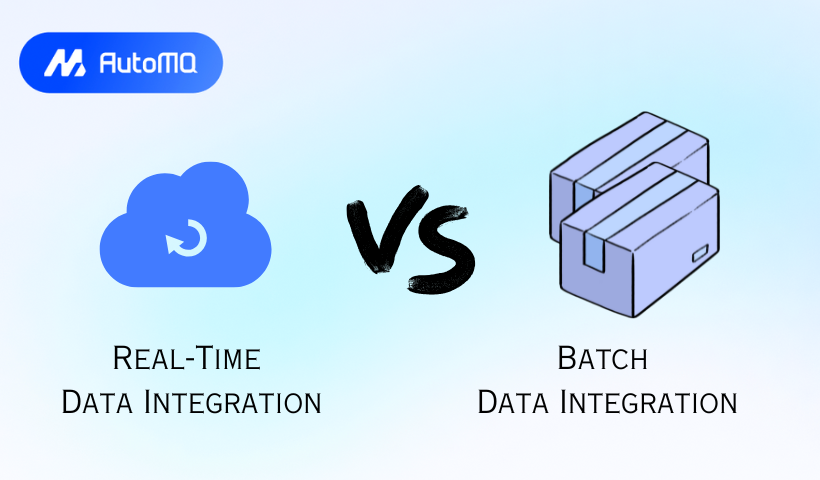Overview
In today's data-driven world, organizations are constantly seeking ways to harness the power of their information assets. A critical component of this endeavor is data integration – the process of combining data from different sources to provide a unified view. Two primary approaches dominate this landscape: real-time data integration and batch data integration. Understanding the nuances, strengths, and weaknesses of each is crucial for businesses aiming to make timely decisions, optimize operations, and gain a competitive edge.
This blog post will delve into a comprehensive exploration of real-time and batch data integration, covering their core concepts, underlying mechanisms, common challenges, best practices, and emerging trends. We will also provide a side-by-side comparison to help you determine the most suitable approach for your specific needs.
Defining the Paradigms: What are Real-Time and Batch Data Integration?
Real-Time Data Integration: The Pulse of Instantaneous Data
Real-time data integration is the process of capturing, processing, and delivering data almost instantaneously after it's generated, with minimal delay [1, 35]. The primary goal is to provide up-to-the-minute information, enabling organizations to react swiftly to changing conditions, make informed decisions based on the latest data, enhance operational efficiency, and bolster their competitive advantage [1]. This approach is characterized by a continuous flow of information across various platforms and systems [1].
How it Works
Real-time data integration typically involves data being captured immediately as it changes, often through techniques like Change Data Capture (CDC) [6]. CDC identifies and records modifications (insertions, updates, deletions) in source databases and delivers these changes to target systems in real time [6, 35]. The captured data then undergoes transformation, cleansing, and validation [1]. This continuous processing is often facilitated by streaming data pipelines and stream processing engines [10, 35]. These engines are designed to handle a constant influx of data, performing operations like filtering, aggregation, enrichment, and transformation on data in motion [10]. Technologies like Apache Kafka are often central to real-time architectures, acting as a distributed event streaming platform that can handle high-throughput, low-latency data feeds [7, 19].
![Real-time data integration [79]](https://static-file-demo.automq.com/6809c9c3aaa66b13a5498262/69099d8dcfcaab639bc7b2fc_67480fef30f9df5f84f31d36%252F685e6255a37c4346fb88b440_9rww.png)
Batch Data Integration: The Power of Scheduled Processing
Batch data integration involves collecting and processing data in predefined groups or "batches" at scheduled intervals [2, 13]. This approach accumulates data over a period—often hours, days, or even weeks—before transferring it en masse to the target system for processing [13, 17]. Batch integration is well-suited for scenarios where immediate data availability is not critical and handling large volumes of data efficiently is the priority [13, 17].
How it Works
The most common pattern in batch data integration is the Extract, Transform, Load (ETL) process [2, 8].
Extract: Data is collected from various source systems (databases, files, applications) [8].
Transform: The extracted data is then cleansed, validated, standardized, and reshaped into a consistent format suitable for analysis. This stage can involve complex business logic and data quality rules [2].
Load: The transformed data is loaded into a target system, typically a data warehouse or data lake, for reporting, analytics, and business intelligence [2, 8, 11, 16].
Alternatively, an Extract, Load, Transform (ELT) pattern may be used, where raw data is loaded into the target system first, and transformations are performed within the target environment, often leveraging the processing power of modern data warehouses [12]. Batch jobs are typically managed and automated by job schedulers [9].
![Batch Processing [79]](https://static-file-demo.automq.com/6809c9c3aaa66b13a5498262/69099d8dcfcaab639bc7b2f9_67480fef30f9df5f84f31d36%252F685e6256aea6958f51de9b81_fBum.png)
Side-by-Side: A Comparative Look
Choosing between real-time and batch data integration depends heavily on specific business requirements, data characteristics, and available resources. Here's a comparative table highlighting their key differences:
| Feature | Real-Time Data Integration | Batch Data Integration |
|---|---|---|
| Data Latency | Milliseconds to seconds; near-instantaneous data availability [1, 35] | Minutes, hours, or days; data is processed at scheduled intervals [13, 17] |
| Processing Frequency | Continuous, event-driven [1] | Scheduled (e.g., hourly, daily, weekly) [2] |
| Throughput Capabilities | Designed for high-velocity, continuous data streams [7, 19] | Optimized for processing large volumes of data in discrete chunks [2, 37] |
| Typical Data Volumes | Can handle high volumes, but focuses on velocity and immediacy | Excellent for very large, historical datasets [37] |
| Implementation Complexity | Generally more complex due to distributed systems, stream processing, and need for continuous monitoring [21, 22, 25] | Generally simpler to implement and manage, mature technologies [21, 22] |
| Cost Considerations | Can be higher due to continuous processing, resource needs for low latency, and potentially more complex infrastructure [21, 24, 25] | Often more cost-effective for large, non-time-sensitive data due to scheduled resource usage and simpler infrastructure [21, 24, 25] |
| Fault Tolerance | Requires robust mechanisms for handling failures in distributed components, ensuring message delivery guarantees (e.g., exactly-once) and state recovery [12, 17, 20, 26] | Well-established error handling, checkpointing, and retry mechanisms within ETL jobs [38, 63, 67] |
| Data Consistency | Can achieve strong consistency with careful design, but eventual consistency is common in distributed streaming systems [20, 23] | Typically ensures strong consistency within a batch once processing is complete [20, 23] |
Use Cases: When to Choose Which
Real-Time Data Integration Scenarios
Real-time integration is indispensable when immediate insights and actions are paramount:
Fraud Detection: Financial institutions analyze transaction streams in real-time to identify and block fraudulent activities instantly [26, 35].
Personalized Customer Experiences: E-commerce platforms use real-time data to offer personalized recommendations, dynamic pricing, and targeted promotions based on live user behavior [1, 35].
IoT Data Processing: Manufacturing, logistics, and smart cities leverage real-time data from sensors for predictive maintenance, operational monitoring, and optimizing resource allocation [4, 35, 70].
Live Dashboards and Monitoring: Businesses monitor key performance indicators (KPIs), system health, and operational metrics in real-time to enable quick responses to issues or opportunities [35].
Financial Trading: Stock market trading relies on real-time market data feeds to make split-second decisions [13].
Supply Chain Optimization: Real-time tracking of goods and inventory levels allows for dynamic adjustments and improved efficiency [26].
Batch Data Integration Scenarios
Batch integration remains highly effective for numerous scenarios:
Periodic Reporting and Business Intelligence: Generating daily, weekly, or monthly sales reports, financial summaries, and other business intelligence dashboards based on historical data [11, 13].
Data Warehousing: Populating and updating data warehouses with large volumes of historical data for analysis and reporting [11, 20].
Payroll Processing: Calculating and processing employee salaries and benefits, typically done in batches at the end of pay periods [13].
Billing Systems: Utility companies and subscription services often generate customer bills in batches on a monthly cycle [13].
Large-Scale Data Migrations and Archiving: Moving large datasets between systems or archiving historical data for compliance or infrequent access [3].
Offline Data Analysis: Performing complex analyses on large datasets where immediate results are not required, such as customer segmentation or trend analysis based on historical patterns.
Hybrid Approaches: The Best of Both Worlds?
Increasingly, organizations are finding that a purely real-time or purely batch approach doesn't meet all their needs. Hybrid architectures, such as the Lambda [28, 60] and Kappa [29, 61] architectures, aim to combine the benefits of both. The Kappa architecture, for example, suggests using a single stream processing engine to handle both real-time processing and reprocessing of historical data from an immutable log [29, 61]. This allows for simplified architectures while still catering to different data timeliness requirements.
Best Practices
Regardless of the chosen approach, adhering to best practices is key to successful data integration.
Best Practices for Real-Time Data Integration
Design for Scalability and Resilience: Build architectures that can scale horizontally and are resilient to component failures. Utilize technologies that support data replication and fault tolerance [5, 7, 10].
Prioritize Data Quality: Implement data validation and cleansing mechanisms as close to the source as possible. Use schema registries to manage and enforce data contracts [7, 14].
Ensure Message Ordering and Exactly-Once Processing: Where critical, implement patterns and use platform features that guarantee message order and EOS [26, 39].
Implement Comprehensive Monitoring and Alerting: Continuously monitor data pipelines for latency, throughput, errors, and data quality anomalies. Set up actionable alerts [7, 30].
Secure Data in Motion: Use encryption (TLS/SSL) for data in transit and implement robust authentication and authorization mechanisms [7, 43].
Manage Schema Evolution Gracefully: Employ schema registries and versioning to handle changes in data structures without disrupting pipelines [7, 14, 41].
Optimize for Performance: Tune stream processing jobs, optimize data serialization formats, and manage state efficiently [10, 12].
Simulate and Test Thoroughly: Conduct rigorous testing under realistic load conditions to identify bottlenecks and ensure reliability [7].
Best Practices for Batch Data Integration
Define Clear Objectives and Scope: Clearly understand the business requirements and the data needed before designing batch processes [42, 68, 71].
Implement Robust Data Quality Checks: Validate, cleanse, and standardize data during the ETL/ELT process. Establish clear data quality rules [42, 45, 68, 71].
Optimize Processing Windows: Design batch jobs for efficiency to minimize run times. Use techniques like incremental loading (processing only new or changed data) and parallel processing [63, 68].
Implement Comprehensive Error Handling and Logging: Design jobs to handle errors gracefully, log them effectively, and have clear restart/recovery procedures [38, 63, 67]. Checkpointing can allow jobs to resume from the point of failure [63].
Manage Dependencies: Use workload automation or job scheduling tools to manage dependencies between batch jobs effectively [9].
Ensure Data Governance and Lineage: Document data sources, transformations, and target systems. Maintain data lineage to track the origin and journey of data [42, 45].
Secure Data at Rest and in Transit: Implement appropriate security measures for data extraction, transformation, and loading, including access controls and encryption [42].
Test Extensively: Thoroughly test ETL/ELT logic with representative data volumes and scenarios [63].
Monitor Batch Job Execution: Track job completion status, execution times, and resource utilization. Set up alerts for failures or significant deviations from expected performance [63, 68].
Conclusion: Choosing Your Data Integration Path
Both real-time and batch data integration play vital roles in the modern data landscape. The choice between them, or a hybrid approach, is not a one-size-fits-all decision. It hinges on a careful evaluation of your organization's specific use cases, data characteristics (volume, velocity, variety), latency requirements, analytical needs, existing infrastructure, and budget.
Real-time data integration offers the power of immediacy, enabling businesses to be agile, responsive, and proactive. However, it often comes with greater complexity and cost. Batch data integration, while offering less immediacy, excels in processing large volumes of data efficiently and can be more cost-effective for many traditional analytical tasks.
By understanding the fundamental concepts, benefits, challenges, and best practices associated with each approach, and by keeping an eye on emerging trends like AI-driven and serverless integration, organizations can make informed decisions to build robust and effective data integration strategies that unlock the full value of their data assets and drive business success.
If you find this content helpful, you might also be interested in our product AutoMQ. AutoMQ is a cloud-native alternative to Kafka by decoupling durability to S3 and EBS. 10x Cost-Effective. No Cross-AZ Traffic Cost. Autoscale in seconds. Single-digit ms latency. AutoMQ now is source code available on github. Big Companies Worldwide are Using AutoMQ. Check the following case studies to learn more:
Grab: Driving Efficiency with AutoMQ in DataStreaming Platform
Palmpay Uses AutoMQ to Replace Kafka, Optimizing Costs by 50%+
How Asia’s Quora Zhihu uses AutoMQ to reduce Kafka cost and maintenance complexity
XPENG Motors Reduces Costs by 50%+ by Replacing Kafka with AutoMQ
Asia's GOAT, Poizon uses AutoMQ Kafka to build observability platform for massive data(30 GB/s)
AutoMQ Helps CaoCao Mobility Address Kafka Scalability During Holidays
JD.comx AutoMQ x CubeFS: A Cost-Effective Journey at Trillion-Scale Kafka Messaging
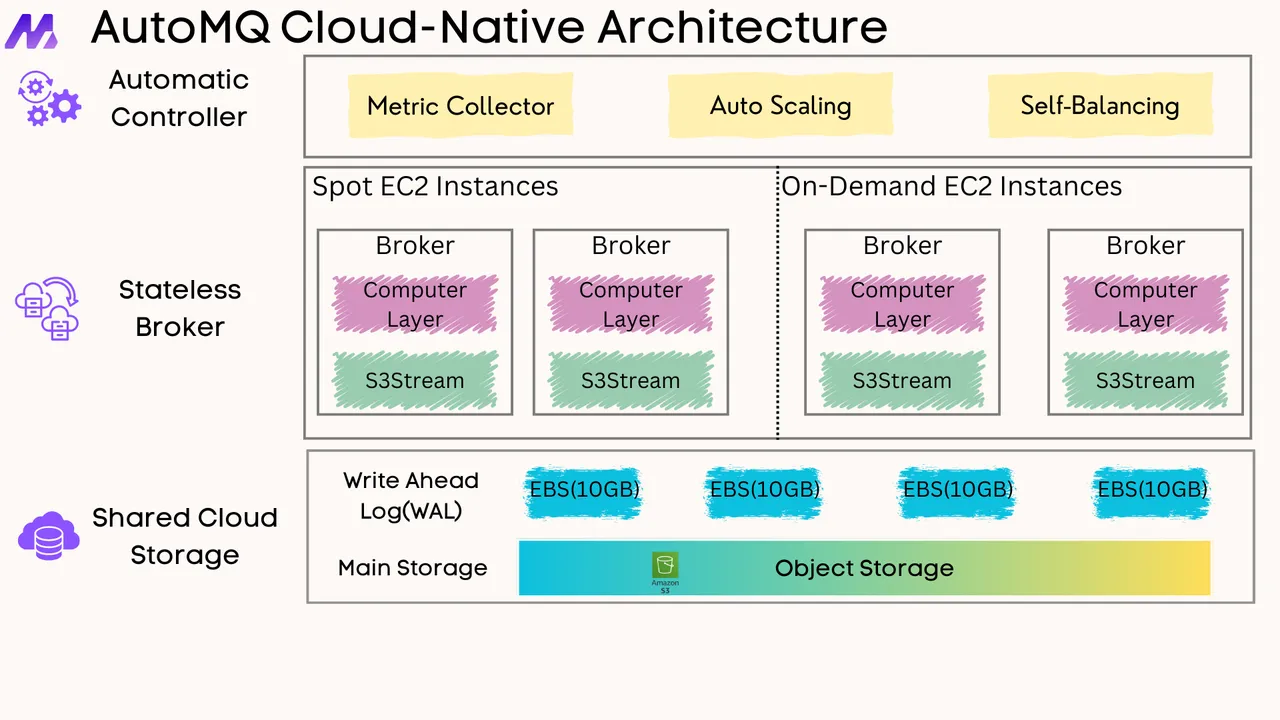
References
IoT Data Solution: Real-Time Data Streaming and Integration Tools
Real-time data ingestion—Implementation strategies and considerations - Redpanda
Cross-Platform Job Scheduling Software - ActiveBatch Workload Automation
Real-time Data Integration Vs. Batch Data Integration - Gigaspaces
Data Integration Architecture: Key Factors Explained - Astera Software
Real-time data integration vs. Batch data integration - Alumio
Data engineering 101: lifecycle, best practices, and emerging trends - Redpanda
What is Real-Time Data Integration and Why It Matters - TiDB
What is Change Data Capture (CDC)? Definition, Best Practices - Qlik
Batch vs. Real-Time Processing: What's the Difference? - eHouse Studio
Real-Time vs Batch Data Ingestion: A Guide to Making the Right Choice - CelerData
Understanding Consistency Models in Distributed Systems - TiDB
What Drives Up the Cost of Integration? Factors You Should Know - Starfish ETL
Real-Time vs Batch Processing A Comprehensive Comparison for 2025 - TiDB
What Is A Kafka Data Pipeline? Architecture & Examples 2025 - Estuary
Event Sourcing pattern - Azure Architecture Center | Microsoft Learn
AI Data Integration and AI-Driven ETL/ELT - Matillion
What is a data mesh? - Cloud Adoption Framework - Learn Microsoft
The Impact of Serverless Architecture on API Integration - Pixel Free Studio
The Top 20 Problems with Batch Processing (and How to Fix Them with Data Streaming) - Kai Waehner
Mastering Schema Evolution: Best Practices for Data Consistency - Airbyte
What Is Data Integration Architecture: Diagram, & Best Practices - Airbyte
What is Data Quality? Why You Need It & Best Practices - Qlik
How to Achieve Fault Tolerance in Open Source Databases - TiDB
What is Serverless Architecture? A Practical Guide with Examples - Middleware.io
Function as a Service (Faas) – System Design | GeeksforGeeks
Backend as a Service – The Ultimate Game-Changer You Need Today - Matellio Inc
13+ Best Data Streaming Platforms: Scalable Solutions 2025 - Estuary.dev
Lambda Architecture 101—Batch, Speed & Serving Layers - Chaos Genius
The pros and cons of the Event Sourcing architecture pattern - Red Hat
Comparing Major Serverless Providers: AWS, Azure, and Google Cloud - HAKIA.com
8 Essential Data Pipeline Design Patterns You Should Know - Monte Carlo
Top ETL Best Practices Every Data Engineer Needs To Know - Firebolt
Best Practices for Data Integration Process - Decision Foundry
Message Ordering: Ensuring Sequence in Queues - Alibaba Cloud
What is Fault Tolerance? | Creating a Fault Tolerant System - Imperva
Partner Zones: Secure Kafka Data Sharing Without Duplication
Data Pipeline Architecture: 5 Design Patterns with Examples | Dagster Guides
Real-time Vs Batch Processing Made Simple: What Is The Difference?





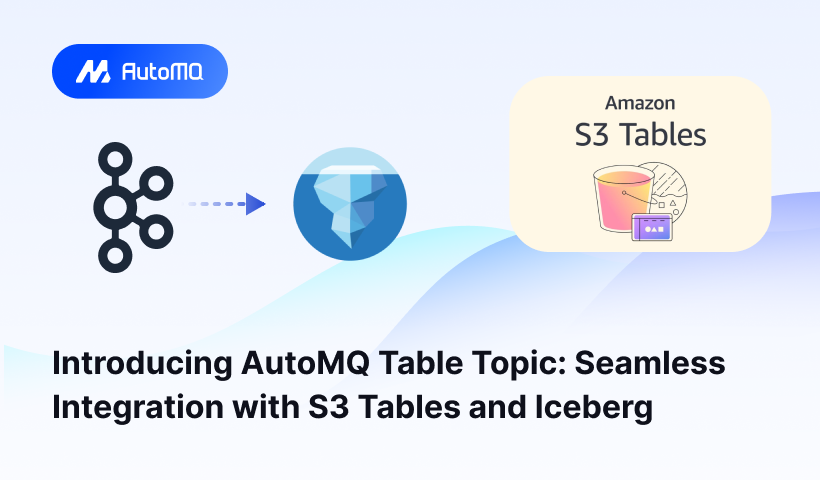
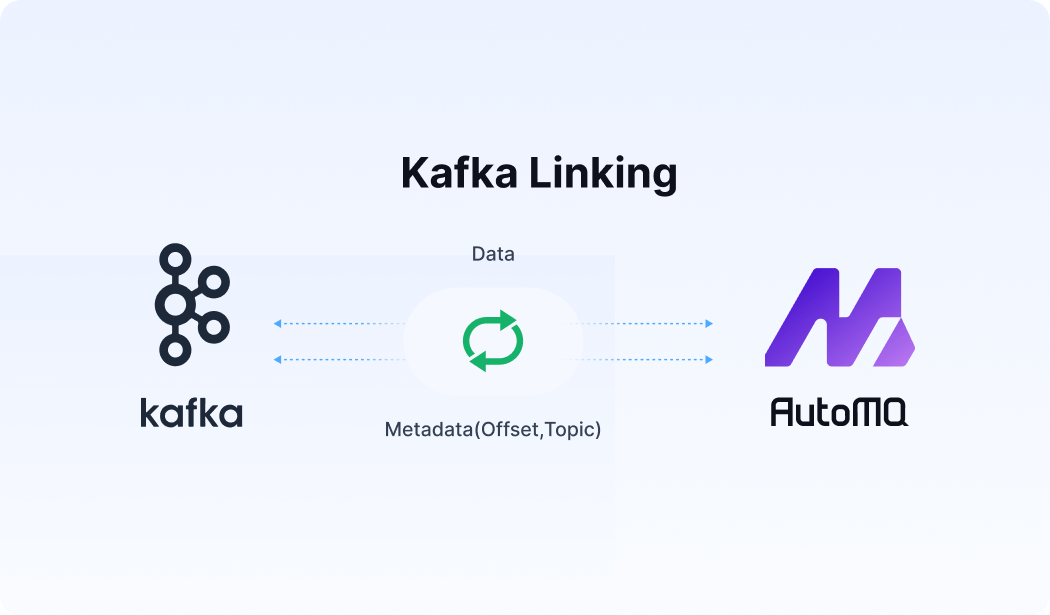




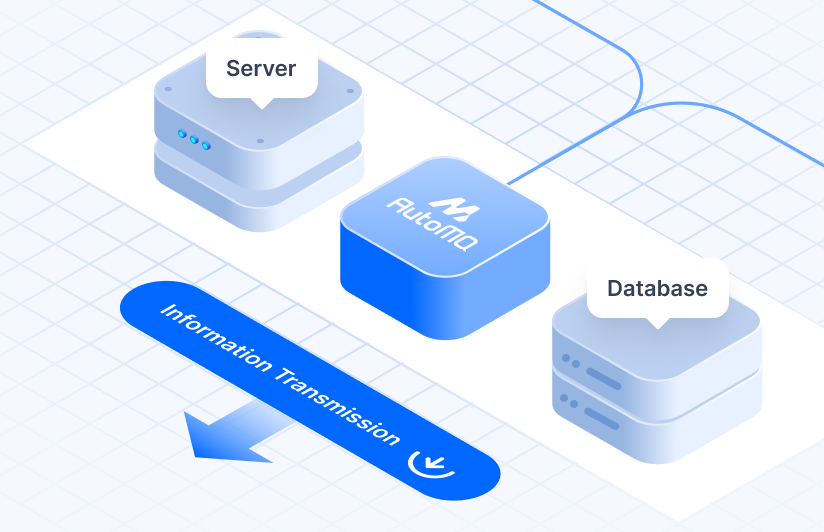
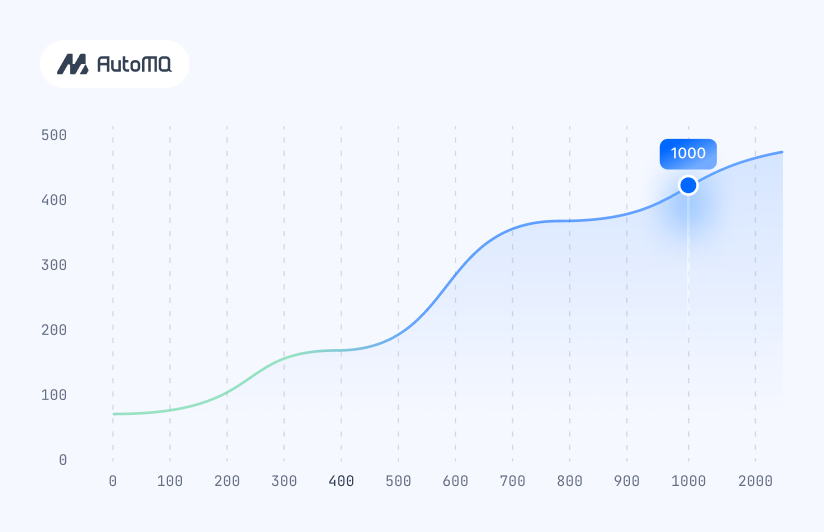


.png)
